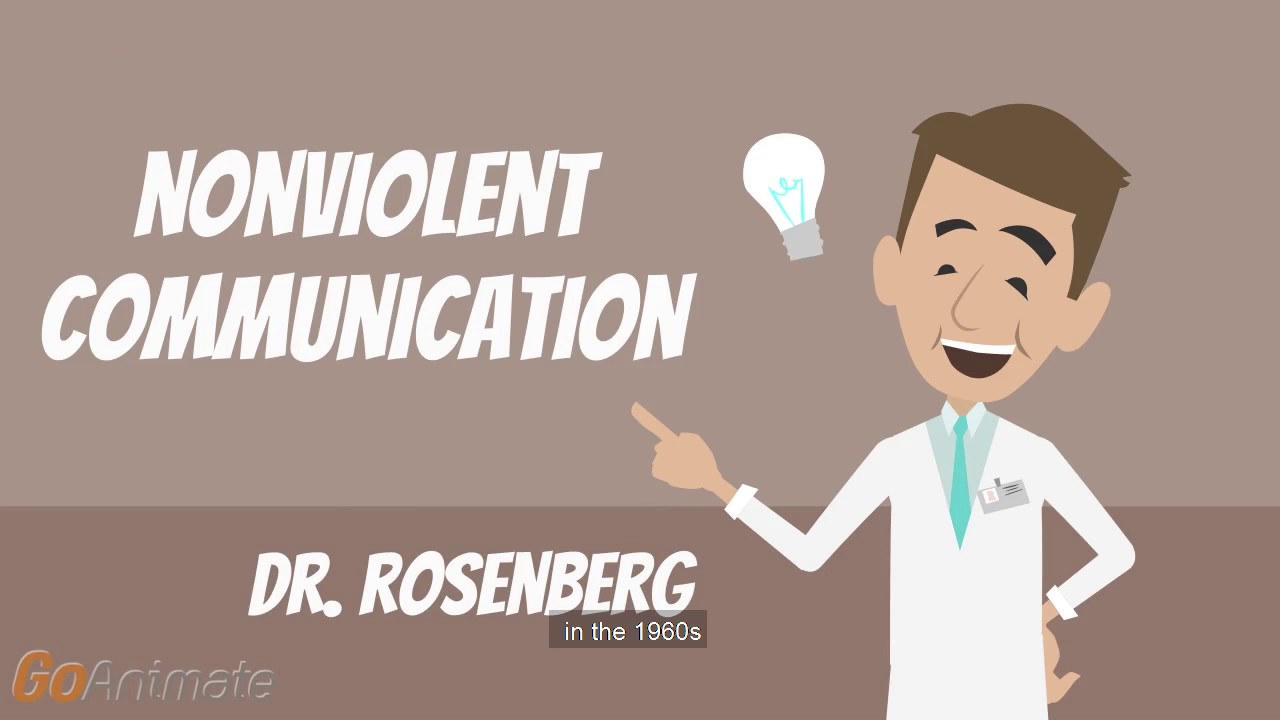Wikipedia:
Nonviolent Communication (abbreviated NVC, also called Compassionate Communication or Collaborative Communication) is an approach to nonviolent living developed by Marshall Rosenberg beginning in the 1960s.
NVC is based on the assumption that all human beings have capacity for compassion and empathy and that people only resort to violence or behavior harmful to others when they do not recognize more effective strategies for meeting needs.
NVC theory supposes that all human behavior stems from attempts to meet universal human needs, and that these needs are never in conflict; rather, conflict arises when strategies for meeting needs clash. NVC proposes that people should identify shared needs, which are revealed by the thoughts and feelings surrounding these needs, and then they should collaborate to develop strategies and make requests of each other to meet each other’s needs. The goal is interpersonal harmony and learning for future cooperation.
NVC aims to support change on three interconnected levels: within self, between others, and within groups and social systems. NVC is taught as a process of interpersonal communication designed to improve compassionate connection to others. Practitioners also emphasize that it can have many beneficial “side effects” as a spiritual practice, as a set of values, as parenting best practices, as a tool for social change, as a mediation tool, as an educational orientation, and as a worldview.
1st Chapter of the book:
https://www.cnvc.org/training/resource/book-chapter-1
or from https://www.nonviolentcommunication.com/learn-nonviolent-communication/ :
What is Nonviolent Communication?
“What others do may be a stimulus of our feelings, but not the cause.”
– Marshall B. Rosenberg, PhD.
The basics of Nonviolent Communication are quite simple really. Nonviolent Communication (NVC) helps you to create a high quality of connection out of which people spontaneously enjoy contributing to one another’s well-being. NVC uses consciousness, language, and communication skills to create a framework from which you can:
express your feelings and needs with clarity and self-responsibility;
listen to others’ feelings and needs with compassion and empathy;
facilitate mutually beneficial outcomes for all parties involved.
NVC is often associated with self-help communication skills, but it goes much beyond. Rather than a format, NVC is a consciousness based on the intention to create positive connection — recognizing that mutually enriching outcomes will emerge from the quality of the relationships. Rather than be motivated by fear, guilt, or any coercion, people give freely and happily when they feel good about each other and trust that their needs matter to the other person. NVC can help you create these kinds of relationships, personally and professionally.*
Nonviolent Communication (NVC) is a unique and powerful process for inspiring compassionate connection and action. It provides a framework and set of skills to address a wide range of concerns, from the most intimate relationships to global political conflicts.*
The purpose of NVC is to help all involved to sharpen their awareness of language so that they can express what really matters to them, and also hear what really matters to others. It involves empathic communication whereby we can attune ourselves to both our own and other people’s real needs.
NVC recognizes that how we interact with each other is driven by core human motivators also known as universal human needs. By using NVC in our daily lives, we can identify and transform deeply ingrained “violent” communication methods that get in the way of having satisfying relationships Key Facts About NVC.
What is Violent Communication?
The basics of Nonviolent Communication involve expressing ourselves with clarity, compassion, self-responsibility, empathy, and the common good in mind, which is the exact opposite of what violent communication is. Violent communication involves threatening, judging, dehumanizing, blaming, or coercing others in order to get our way in a situation. Violent communication creates misunderstanding and frustration, pain and disagreements. What violent communication is, in everyday desired relationship terms, is a way of thinking and speaking that gets in the way of the quality of connection for which we are looking. It can also lead to anger, shame, guilt, depression and, in extreme cases, emotional or physical violence.
Many of us are taught to express our feelings in terms of what another person has “done to us.” Unfortunately, we are not taught to take ownership of our feelings and needs in order to ask healthily for only what benefits and is fair to all parties involved.
The overwhelming majority of people do not consciously know what violent communication is, and because of this they end up using “violent” communication unconsciously. Or, they do not mean to communicate in a way that judges, demeans, or manipulates other people. This leads to conflict that could have been avoided using the consciousness and tools of “compassionate communication,” another name for NVC.
Some short overview videos about it:
and
And lastly, the most popular workshop videos:



